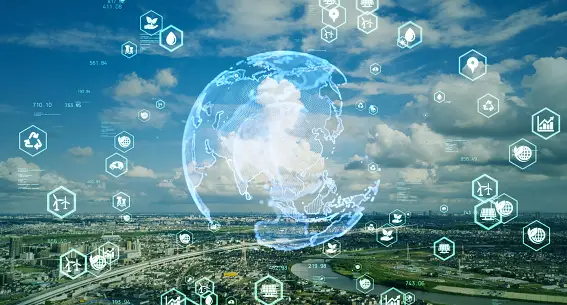At GSTS, our focus is on facilitating stakeholder collaboration, operational optimisation and risk mitigation towards maritime sustainability mandates. OCIANA®, our proprietary AI powered platform, enables these objectives with real-time predictive visibility, harnessing the wealth of maritime data within the platform. Our customers are thus enabled to make informed, data-driven decisions. Through the OCIANA® Optimiser solutions, maritime stakeholders are able to leverage real-time fuel consumption and greenhouse gas (GHG) emissions, to delve deeper and analyze global trends and their impacts. Below is a brief analysis of the year-over-year percentage of change in global shipping emissions in April, from 2022 to 2024.
2023: A Glimpse of Cleaner Corridors
OCIANA’s data reveals a positive trend in 2023. Compared to 2022, there was a significant decrease in emissions. The blue hues below (Figure 1) represent routes where shipping activity became more environmentally friendly, representing values above 25% compared to the previous year. Interestingly, this trend coincides with the sanctions and bans imposed on Russia’s shipping industry following the Ukraine conflict. The disruption in Russian shipping is particularly evident in the dramatic decrease of emissions north of the country.
The Black Sea, however, paints a different picture. Here, emissions increased in certain regions. The rise of emissions could be reflected by the shift in port calls. With major Black Sea ports suspended due to the political tension in the area, smaller ports stepped up to fill the gap, which allowed the increase of activity at Ukrainian Danube River ports like Reni and Izmayil, and a surge in shipping activity in neighboring countries (OECD 2023).


2024: New Trends Emerge Amidst Global Maritime Route Complexity
While 2023 offered hope, April 2024 presented a more complex scenario. Emissions appear to be exploding, with corridors in southern Africa, and even a resurgence north of Russia especially highlighted. On a more positive note, there was a significant reduction in emission near the Suez Canal. This encouraging development seemingly coincides with heightened tensions in the Middle East, suggesting a potential decrease in shipping activity in that region.


OCIANA®: Facilitating Real-time Monitoring
The analysis showcases the power of OCIANA® and its real-time fuel consumption and GHG emission monitoring. OCIANA® facilitates user tracking and insights highlighting significant trends in the maritime industry, identifying areas for improvement, and ultimately, contributing to a more sustainable future for our oceans and planet.
GSTS continues to analyze and share insights from our data, providing valuable information for stakeholders across the shipping industry. Our commitment is to using technology to promote environmental responsibility and create a cleaner maritime future.
REFERENCES
OECD. Nov 2023. https://www.oecd.org/ukraine-hub/policy-responses/impacts-of-russia-s-war-of-aggression-against-ukraine-on-the-shipping-and-shipbuilding-markets-4f925e43/
Contact us to learn more today: sales@gsts.ca


